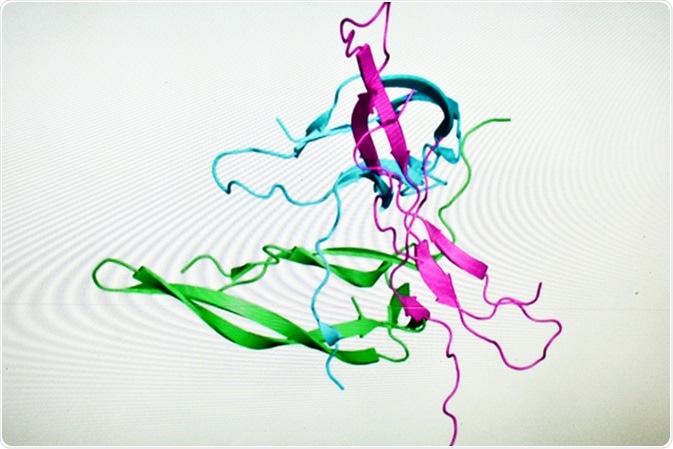Many chronic or lifestyle diseases occur without any of the traditional risk factors, precluding the possibility of preventive intervention. The use of proteomic biomarkers is therefore urgently needed to complement and enhance the information available by conventional risk stratification.
Blood tests are the most common type of biological tests used in clinical practice and laboratory testing. They are based upon the changes in the number of various proteins in the blood. However, doing this on a large scale by simultaneously monitoring all the blood proteins (that is, the blood proteome) brings out the actual picture of protein expression in health and disease.
Plasma proteomics is a term which describes the high-throughput analysis of plasma biomarkers using very powerful, sensitive and specific instruments. Up to about 2002, the most advanced technology for plasma protein analysis was the 2D PAGE approach, with which about 289 proteins were isolated at most. Today more than 10 000 are known, largely the result of using advanced chromatography to separate components of crude peptide mixtures in multiple dimensions, in combination with mass spectrometric (MS) analysis. This allows thousands of samples to be analyzed in a high-throughput mode.

Methods Used in Plasma Proteomics
Serum albumin, globulins, and complement factors make up over 99% of the total of plasma proteome, making it among the most complicated and diverse sub-proteomes in the human organism.
Novel methods of sample preparation have also evolved to help detect even those proteins which are present at extremely low concentrations in plasma. These include affinity purification to obtain a specific protein and immunochemistry to eliminate proteins in high concentrations. Moreover, high-speed MS tools and the launch of LC platforms for durable nanoscale flows have enabled robust workflows in proteomics to deepen the analysis.
Advantages
One of the chief advantages of plasma proteomics is the convenient availability of blood in the peripheral circulation, making it possible to obtain samples in a straightforward manner. Blood is also the medium that bathes all tissues and cells and carries substances synthesized, secreted, degraded or absorbed at various sites. It is for this reason that circulating biomarkers have been studied more often than site-specific blood markers.
Issues
However, an issue with this practice is that changes in circulating biomarkers could reflect illness or derangement of any organ system rather than a specific condition, unless the marker is itself specific such as troponin T which is released only from damaged cardiac myocytes.
Another problem is the increased ratio of signal to noise, decreasing its predictive value and hence its clinical utility. This can only be addressed by using interventional procedures to take blood samples from a vessel emerging from the organ of interest, which is not feasible in most cases.
However, the biggest concern is the wide range of concentration of the various proteins in plasma over 12 orders of magnitude, from the micromolar to the femtomolar level.
Another obstacle is that not only are there thousands of proteins but these are known to occur in many forms following post-translational modification. The plasma proteins also change with different metabolic and physiological states and stages. There are also gross differences in the type and number of quantified proteins expressed in plasma, depending on the type of sample, viz, plasma vs tissues or cells. To overcome this, several very sophisticated analytical approaches are being put into use, focusing on taming the complexity of plasma proteins and their dynamic range.
Biological variation is another issue to be addressed. Among classes, this is typically done by using pooled samples of healthy and of diseased individuals. Proteomics analytics yields unbiased quantification of the proteins in the average individual, either healthy or diseased. However, this offers no solution to the problem of individual biological variation for individual proteins. Albumin, for instance, shows very low variability among individuals. On the other hand, other plasma proteins have a very large range of variability between individuals so that even large differences in their concentration among different people may not be of any clinical importance. This is unmasked only by the large-scale testing of many individual samples for quantitative protein expression, which is rarely done and only in limited numbers, if then. The pooled approach is likely to miss many potentially useful biomarkers by ignoring the small but informative differences between groups because they do not amount to fold variations.
Applications
Plasma proteomics may help significantly to predict the onset of and treat, metabolic and other chronic illnesses in a personalized manner, and to identify adverse effects of drugs. The evolution of novel biomarkers for disease conditions requires the identification of potential biomarkers by case-control studies, or currently by longitudinal studies. This is then verified by targeted analysis of a greater number of plasma samples. Finally, the candidate markers are tested in large cohorts of subjects to evaluate their sensitivity, specificity, and usefulness by clinical validation.
Sources
- https://www.sciencedirect.com/science/article/pii/S2212963415000029
- https://www.sciencedirect.com/science/article/pii/S2212968513000044
- https://biognosys.com/the-future-of-high-throughput-plasma-proteomics
Further Reading
- All Proteomics Content
- What is Proteomics?
- Proteomics Uses
- Proteomics Methods
- Protein-Protein Interactions
Last Updated: Oct 8, 2018

Written by
Dr. Liji Thomas
Dr. Liji Thomas is an OB-GYN, who graduated from the Government Medical College, University of Calicut, Kerala, in 2001. Liji practiced as a full-time consultant in obstetrics/gynecology in a private hospital for a few years following her graduation. She has counseled hundreds of patients facing issues from pregnancy-related problems and infertility, and has been in charge of over 2,000 deliveries, striving always to achieve a normal delivery rather than operative.
Source: Read Full Article
